
Abrotanella is a genus in the family Asteraceae, of 23 species, native to Australia, New Zealand and southern South America.

Pleurophyllum speciosum, also known as the giant emperor daisy or Campbell Island daisy, is a megaherb native to the Auckland and Campbell Islands of New Zealand. A false colour image is depicted on the lower left corner on the reverse of the current five dollar New Zealand banknote. The Campbell Island daisy was first described by Joseph Dalton Hooker in Flora Antarctica of 1844, after he had collected it during the Ross expedition.

Poa foliosa is a species of tussock grass commonly known as muttonbird poa. It is native to the subantarctic islands of New Zealand and Australia.

Archeria racemosa is a species of shrub in the family Ericaceae.
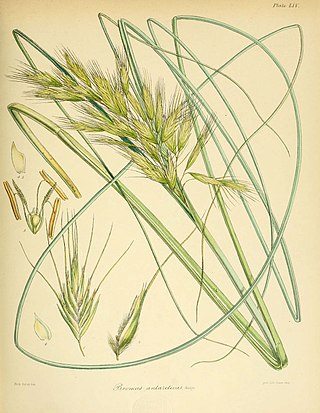
Chionochloa antarctica is a species of grass, endemic to the Auckland and Campbell Islands.

Anthoxanthum brunonis is a species of grass, native to the South Island of New Zealand and to the Auckland and Campbell Islands.
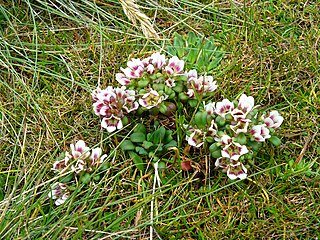
Gentianella concinna is a flowering plant species, endemic to the Auckland Islands of New Zealand.

Ranunculus pinguis is a dark green, fleshy-leaved buttercup with relatively large, short-stalked flowers and narrow stiff yellow petals that grows in tufts. It is an endemic species of New Zealand on the Auckland and Campbell Islands that flowers from December to January and sets seeds between February and April.

Scaevola gracilis is a plant in the family Goodeniaceae, native to the Kermadec Islands and Tonga.

Myosotis antarctica is a species of flowering plant in the family Boraginaceae, native to mainland New Zealand, Campbell Island and southern Chile. Joseph Dalton Hooker described the species in his 19th century work Flora Antarctica. Plants of this species of forget-me-not are perennial with a prostrate habit, bracteate inflorescences, and white or blue corollas. It is one of two native species of Myosotis in the New Zealand subantarctic islands, the other being M. capitata, which also has blue corollas.

Anisotome antipoda is a species of flowering plant in the family Apiaceae, which is endemic to the Auckland, Campbell and Antipodes Islands.

Azorella schizeilema is a species of cushion plant in the Apiaceae family, native to the Auckland and Campbell Islands.

Myosotis capitata is a species of flowering plant in the family Boraginaceae, endemic to the Campbell and Auckland Islands of New Zealand. Joseph Dalton Hooker described the species in his 19th century work Flora Antarctica. Plants of this species of forget-me-not are perennial and erect, and have ebracteate inflorescences and blue corollas. It is one of two native species of Myosotis in the New Zealand subantarctic islands, the other being M. antarctica, which can also have blue corollas.
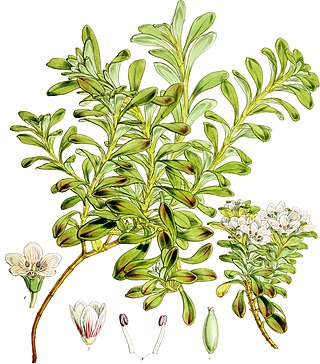
Gentianella cerina is a plant species in the Gentianaceae family, endemic to the Auckland Islands of New Zealand.

Carex erebus is a member of the sedge family and is found on the Antarctic Islands of Australia and New Zealand.
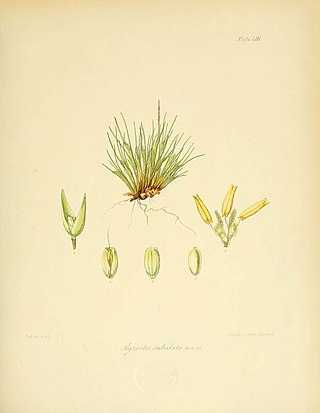
Agrostis subulata is a grass, which grows only on Campbell Island and on Antipodes Island in New Zealand.

Leptinella lanata is a small flowering plant in the daisy family, native to the Antipodean Islands. Its specific epithet, lanata, describes its woolly-haired (lanate) rhizomes.
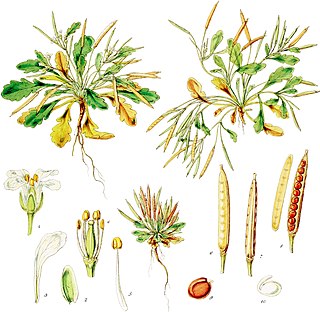
Cardamine depressa, commonly known as bitter cress, is a plant in the Brassicaceae family, found in the Antipodean Islands.
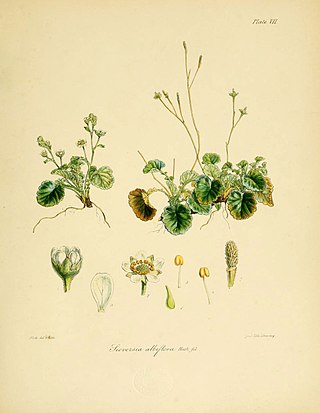
Geum albiflorum is a plant in the rose family, Rosaceae family, found in the Auckland Islands.
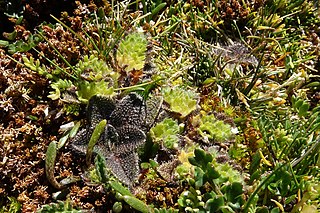
Myosotis antarcticasubsp. antarctica is a subspecies of flowering plant in the family Boraginaceae, native to New Zealand, Campbell Island, and southern Chile. Joseph Dalton Hooker described the species in his 19th century work Flora Antarctica. Plants of this subspecies of forget-me-not are perennial with a prostrate habit, bracteate inflorescences, and white or blue corollas. It is one of two native Myosotis in the New Zealand subantarctic islands, the other being M. capitata, which also has blue corollas.





















